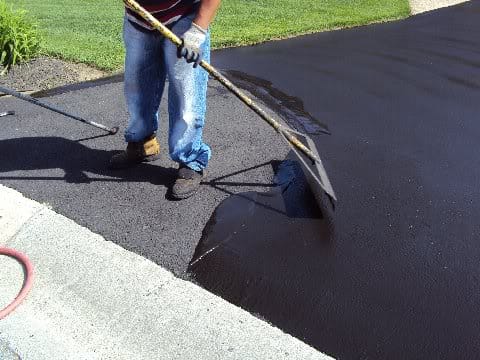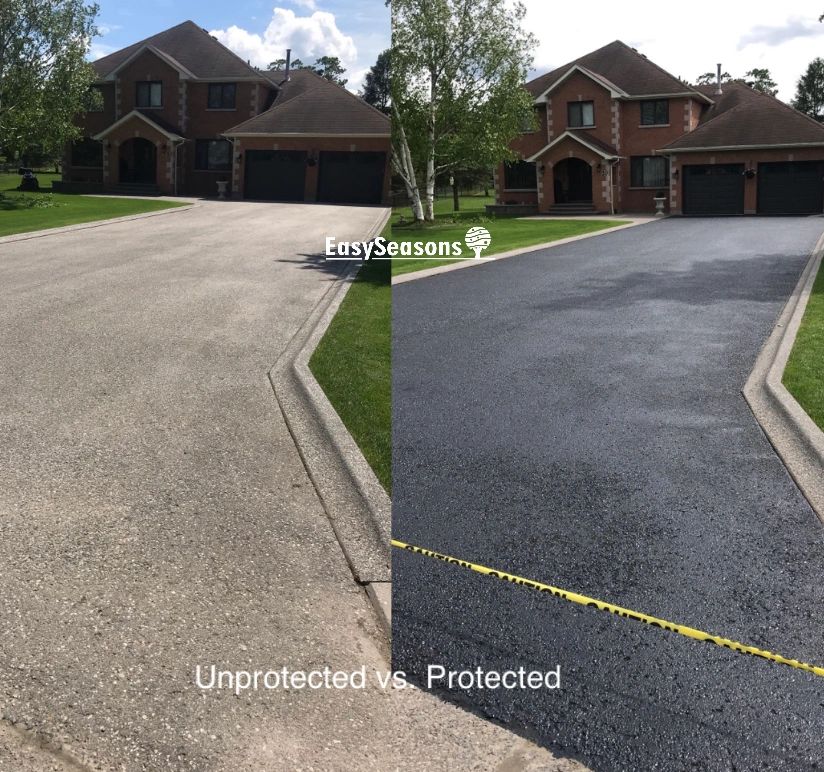Revitalize Your Home with Regrading and Asphalt Sealing Strategies
Revitalize Your Home with Regrading and Asphalt Sealing Strategies
Blog Article
Warm Mix Asphalt: A Sustainable Solution for Pavement
Hot Mix Asphalt (HMA) has become a leading sustainable choice for pavement options, using a myriad of ecological benefits and ingenious modern technologies. Its capacity to reduce and reuse products power usage provides a compelling case for its adoption in road construction projects. In addition, the lasting performance and toughness of HMA make it a favored choice for infrastructure development. As the demand for environment-friendly construction techniques expands, exploring the nuances of HMA's sustainability can provide useful insights right into the future of sidewalk remedies.
Ecological Benefits of Warm Mix Asphalt

Additionally, Warm Mix Asphalt assists to mitigate metropolitan heat island impacts. Its dark color soaks up sunlight, lowering the amount of warmth reflected back into the environment compared to lighter-colored pavements. This can lower ambient temperature levels in urban locations, decreasing the demand for air conditioning and ultimately minimizing power consumption.
On top of that, Hot Mix Asphalt contributes to enhanced stormwater monitoring. Its permeable nature enables water to penetrate the sidewalk and recharge groundwater supplies, minimizing overflow and the threat of flooding. These ecological advantages make Hot Mix Asphalt a lasting choice for paving roads and highways.
Power Effectiveness in HMA Manufacturing
Is power performance an important consider the production of Warm Mix Asphalt (HMA)? Definitely. Power plays a significant role in the manufacturing of HMA, impacting both expense and environmental sustainability. One essential element of energy effectiveness in HMA manufacturing is making use of cozy mix asphalt (WMA) modern technologies (regrading). WMA permits the blending and positioning of asphalt at reduced temperature levels contrasted to conventional warm mix asphalt, leading to decreased energy consumption throughout manufacturing. This process not just reduces fuel usage yet likewise reduces greenhouse gas emissions, making it a much more ecologically friendly option.
Moreover, improvements in plant technologies have actually caused more energy-efficient HMA production procedures. Modern plants are developed with attributes like recycled asphalt pavement (RAP) processing capabilities, effective burner systems, and boosted insulation, all contributing to power financial savings. By enhancing power usage in HMA manufacturing, the industry can decrease its carbon footprint while keeping top notch pavement products. Power efficiency is, consequently, an essential factor to consider in making sure the sustainability of Warm Mix Asphalt manufacturing.
Recyclability of Warm Mix Asphalt
The recyclability of Warm Mix Asphalt (HMA) is a critical facet of its sustainability and long-term environmental effect. HMA is just one of one of the most recycled materials in the United States, with over 100 million tons of recovered asphalt sidewalk (RAP) being recycled annually in brand-new sidewalk construction. Recycling HMA provides a number of environmental benefits, such as reducing the demand for virgin materials, lowering power consumption during production, and reducing the quantity of waste sent out to landfills.
The process of recycling HMA entails crushing the existing pavement, squashing it right into smaller pieces, and blending it with new accumulation and asphalt binder to produce a recycled mix. Generally, the recyclability of HMA plays a considerable role in advertising lasting techniques within the pavement industry.

Long-Term Performance of HMA
Asphalt sidewalks show longevity and resilience over a prolonged duration, showing the long-lasting efficiency of Warm Mix Asphalt (HMA) The long life of HMA can be attributed to its ability to endure heavy traffic tons, extreme weather conditions, and the effects of aging. Research studies have actually shown that well-designed and effectively see this site constructed HMA sidewalks can last for two decades or even more with normal maintenance. The secret to optimizing the lasting efficiency of HMA hinges on using top notch products, complying with finest practices in construction, and implementing reliable maintenance techniques. Proper water drainage, regular evaluations, and timely repair services are necessary for protecting the structural honesty of HMA sidewalks in time. In addition, developments in HMA technology, such as making use of polymer-modified binders and cozy mix asphalt, have better improved the longevity go and long life of HMA pavements. By focusing on high quality building and upkeep techniques, HMA remains to confirm itself as a economical and sustainable option for durable pavement framework.

HMA: Sturdiness and Sustainability
Showing both resilience and sustainability, Warm Mix Asphalt (HMA) has come to be a foundation in the construction of resilient sidewalk infrastructures - hot mix asphalt. HMA's resilience originates from its capacity to withstand hefty loads, rough weather condition problems, and high traffic quantities, making it a trusted option for highways, highways, and airport terminal runways. The structure of HMA, which typically includes accumulations, binder, and filler, plays an important duty in enhancing its durability and resistance to put on and tear
In addition, HMA's sustainability hinges on its recyclability and energy-efficient production procedure. The capacity to reuse recovered asphalt sidewalk (RAP) in brand-new HMA combinations lowers the need for virgin materials and lessens the ecological influence of pavement building and maintenance. Additionally, the energy effectiveness of generating HMA exists in its lower mixing temperatures contrasted to various other sidewalk products, bring about decreased power intake and greenhouse gas exhausts.
Conclusion
In verdict, hot mix asphalt (HMA) offers a lasting remedy for sidewalk with its you can try these out ecologically friendly characteristics. HMA's recyclability, energy performance in production, and long-term longevity make it an eco-friendly selection for road construction.
HMA is one of the most recycled products in the United States, with over 100 million heaps of reclaimed asphalt pavement (RAP) being recycled annually in brand-new pavement building and construction.The process of recycling HMA entails grating the existing pavement, squashing it into smaller sized pieces, and blending it with new accumulation and asphalt binder to produce a recycled mix.Asphalt sidewalks demonstrate durability and durability over an extensive duration, showing the lasting performance of Warm Mix Asphalt (HMA) Additionally, innovations in HMA innovation, such as the use of polymer-modified binders and cozy mix asphalt, have actually further enhanced the sturdiness and longevity of HMA sidewalks. The ability to recycle reclaimed asphalt pavement (RAP) in brand-new HMA mixtures minimizes the demand for virgin products and minimizes the ecological influence of pavement building and construction and upkeep.
Report this page